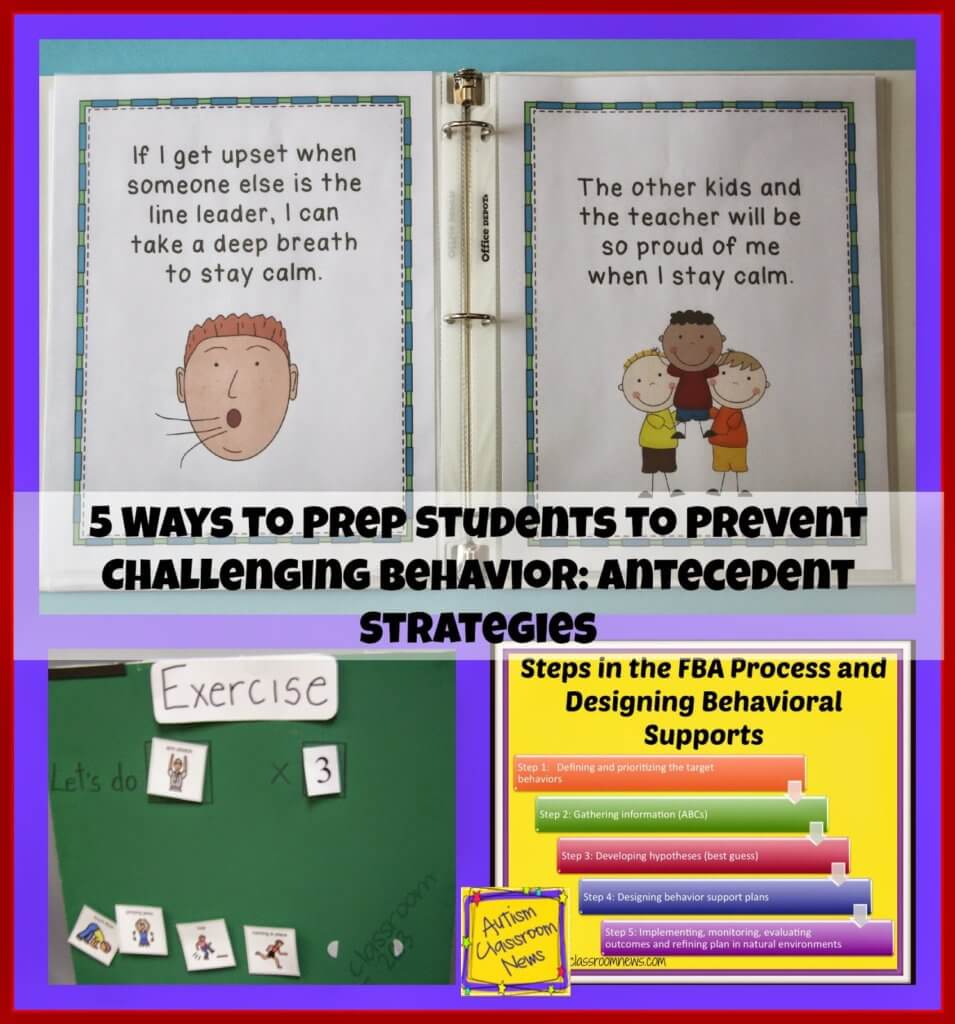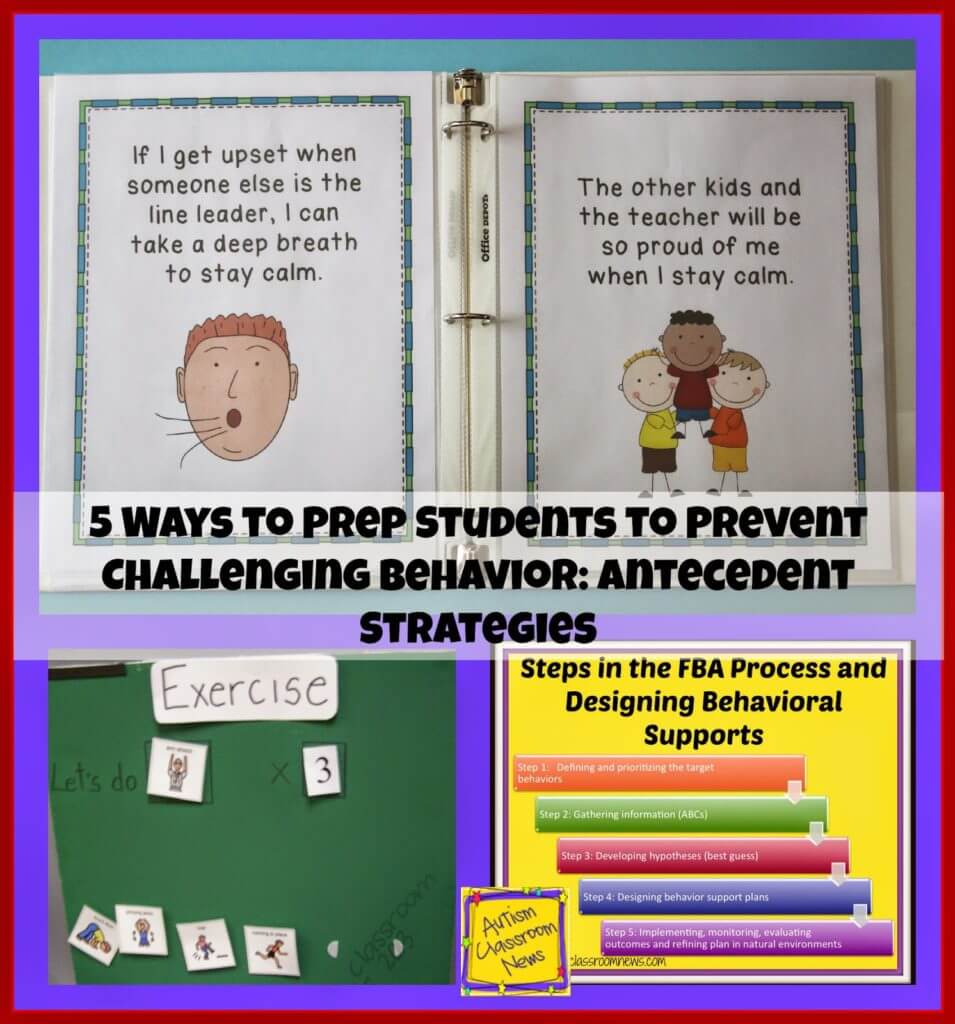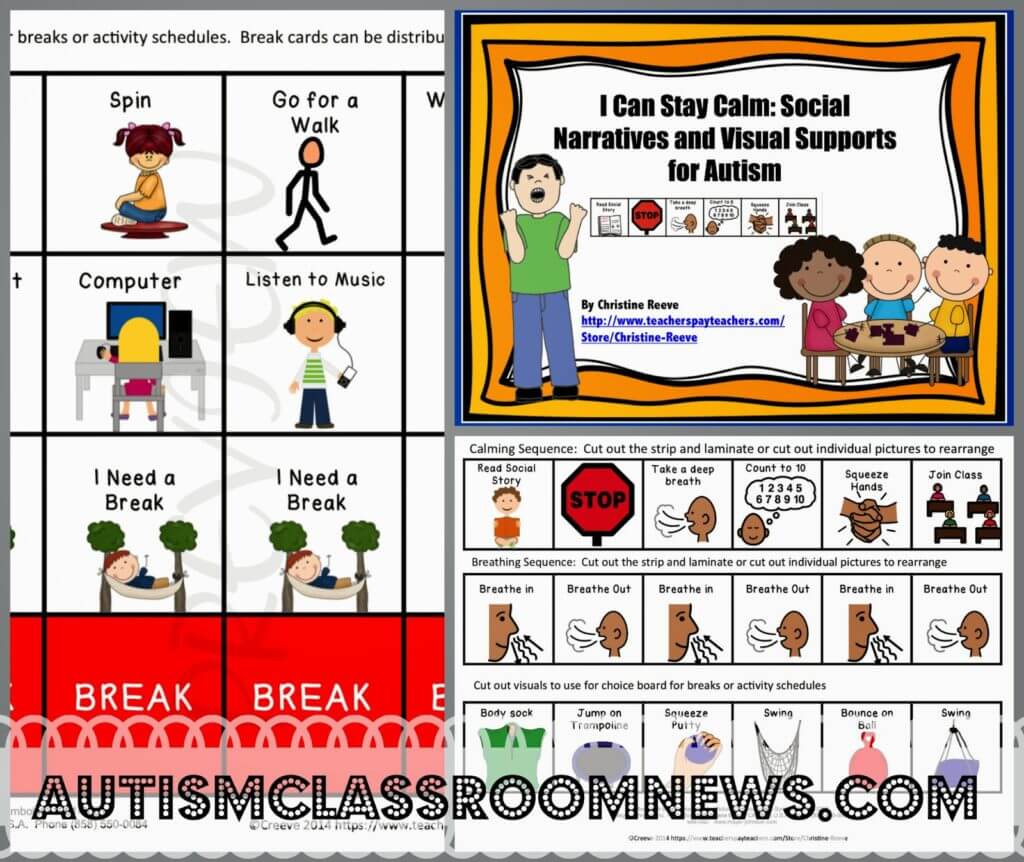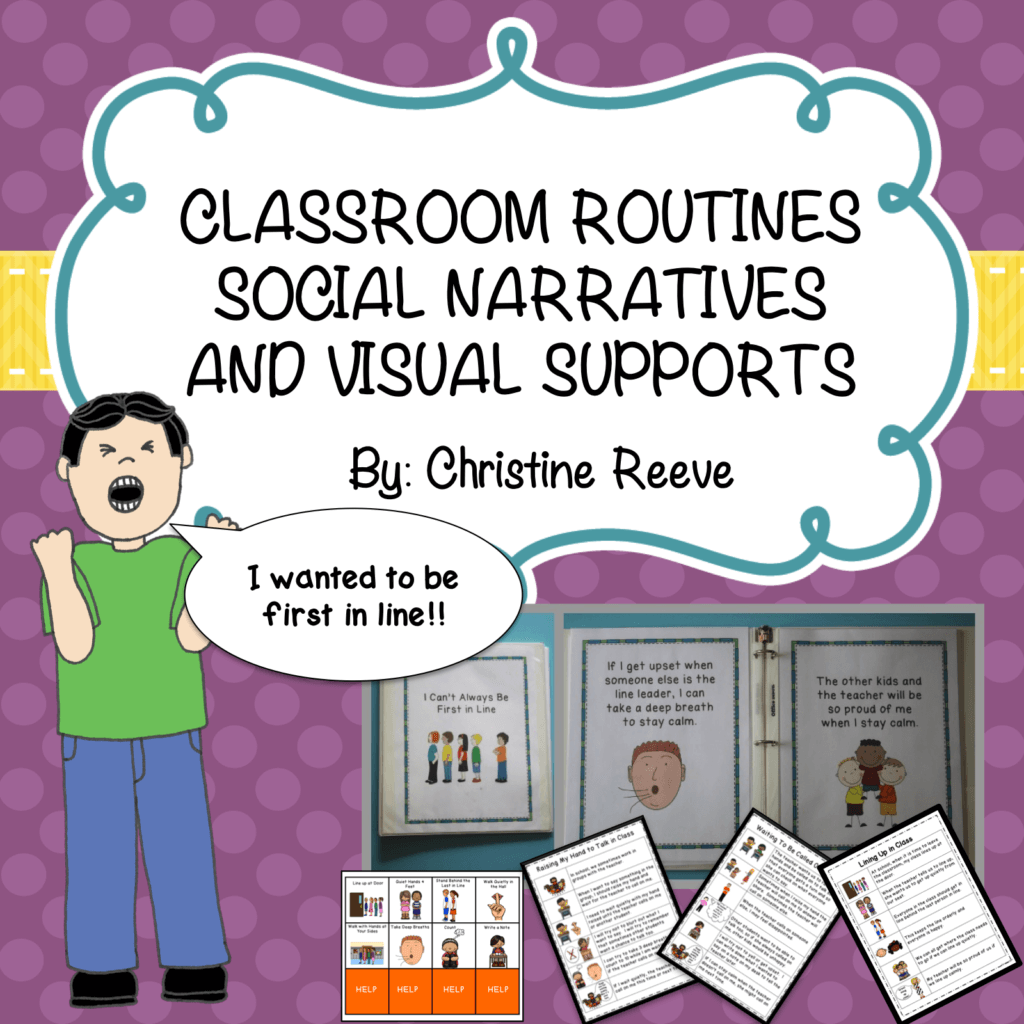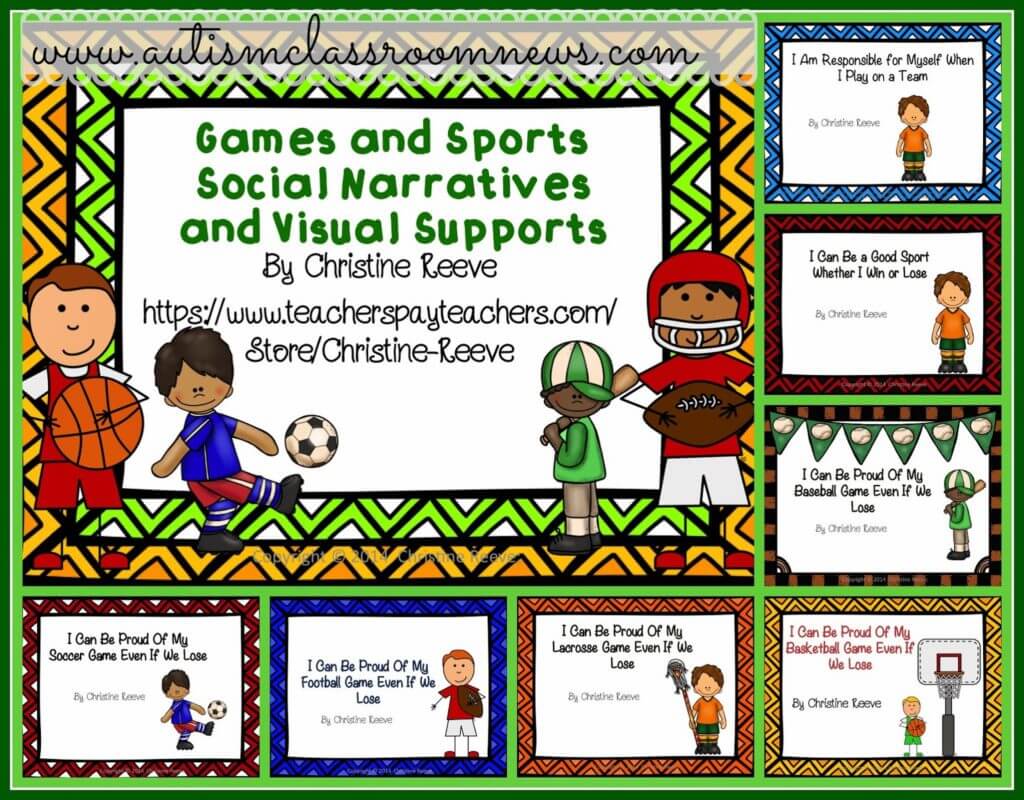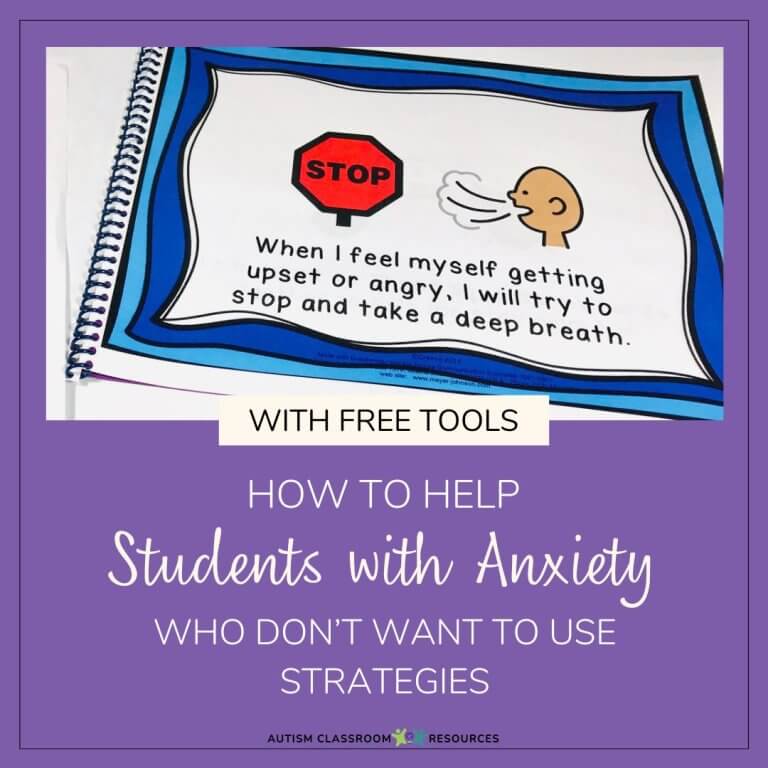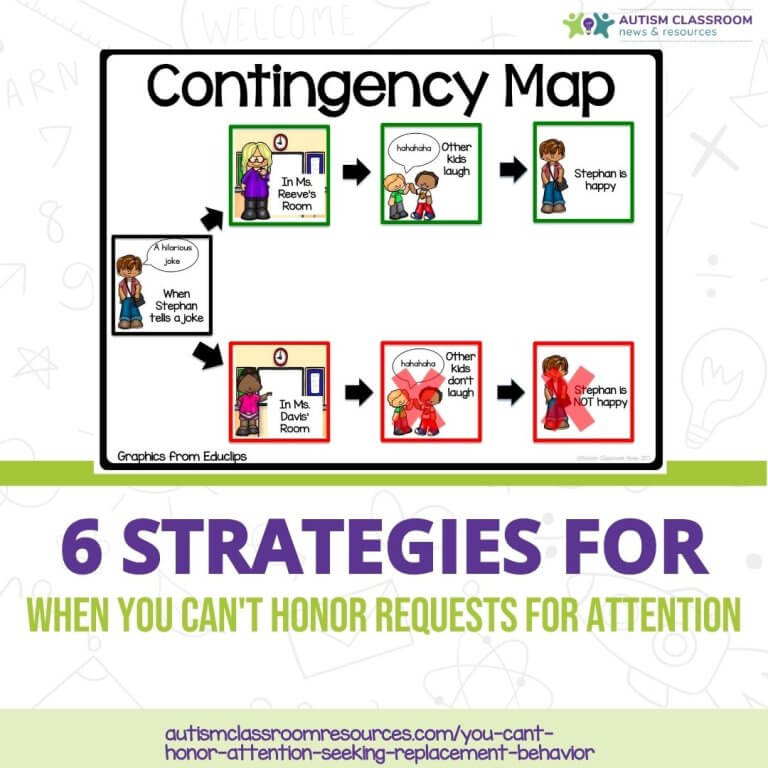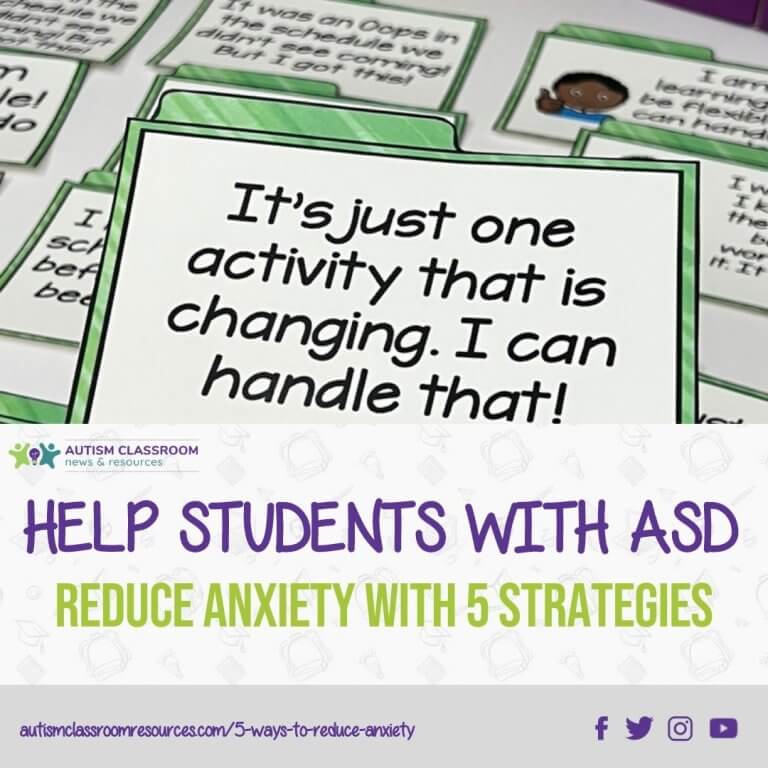Sharing is caring!
To read more of the series on challenging behavior click HERE.
So, in this post I want to finish up talking about antecedent strategies by talking about ways to prepare a student prior to a situation that may be related to challenging behavior so that the student can get through the activity productively and without difficulty. Sometimes preparing someone before they have to manage a difficult situation can help them manage their behavior. Think of it as when you remind your significant other that we decided to try not to argue with the in-laws during the dinner tonight. We all do it, it’s just a matter of making the preparation clear and meaningful for our students–and planning the time to be able to do it. Here are some ways that we can prepare students to help their behavior be more successful.
1. Transition Warnings
One of the most common strategies we use is to warn a student prior to asking him or her to make a transition from a desired activity to a less desired activity. For instance, we might give them a 2-minute warning and then a 1-minute warning before they are asked to put the iPad away and go to a work activity. We might do it with a timer, by setting down a visual as a reminder, or just call out, “2-minutes left and then it’s time for…” This warning lets them get ready for the upcoming transition and sometimes they will make the transition more independently. Other times it can just prevent the tantrum because it’s not a surprise. This works well if your FBA showed that the challenging behaviors were related to transitions or leaving desired activities.
2. Pre-teaching
We talk about pre-teaching for students who are included in general education activities but who benefit from some knowledge about the academic content prior to being exposed to it in a larger environment. For students with challenging behaviors that are related to escaping from that environment or those tasks, pre-teaching the content can prevent challenging behaviors by making the demands more familiar and making them easier because they have had some individual instruction and practice in a smaller environment. So, for instance, if a student often has difficulty when going to science with his class, pre-teaching the experiment in the resource room and having him practice the experiment and knowing what is going to happen may make science less difficult for him and prevent challenging behavior. The key is to program this time into his day and collaborate across the two classes about what the content should be. If it’s not scheduled into the day, pre-teaching generally won’t happen, so think about when you can pre-teach as you make the students’ schedules for the year.
3. Pre-activity Preparation
Another type of pre-activity preparation is to prepare the student behaviorally before going into a difficult situation. Having the student go through a relaxation routine before going into a difficult situation might help them be calm before entering. Reviewing expectations of the activity are another way to prepare a student for a new situation. We use this frequently when we are taking students to new situations (e.g., field trips) but it can work well for prior to entering an everyday activity as well. You can use visuals to present both these types of preparation. The picture above is one that a student uses before going into the general education classroom to help him stay relaxed when he walked into the classroom for some of the harder times of his day.
4. Exercise Breaks
In this post I talked about the evidence for exercise being used as an antecedent strategy for challenging behavior and some tips about how to implement it into the school day. There is also a freebie here related to exercise. Exercise can also be something that you identify in a behavioral support plan with regular exercise breaks built into a student’s day to prevent challenging behaviors from occurring. This strategy works best for individuals whose behavior appears to be related to automatic reinforcement like relieving feelings of anxiety.
5. Social Narratives
Finally, probably one of the most common strategies used for individuals with autism is social narratives. A social narrative is a version of a social story™, originally developed by Carol Gray, to support students with autism. (Because the term social story is trademarked, I refer to them as social narratives which is also the the language that is used in most of the evidence supporting them). They are very useful for helping individuals on the autism spectrum to understand others’ perspective, share information about new or problematic situations, and provide coping strategies for maintaining appropriate behavior and social responses. They typically are short stories that provide information about a specific situation and often include perspective statements and coping strategies for the individual as part of the story. They can be written on a page or as a book with one idea per page. Depending on the skill of the learner, they can be illustrated or just text. They can be prepared for common situations, like going to the dentist, to present information or they can highly individualized, to provide specific steps of a relaxation routine. They can be written on the fly as needed as well.
The research has indicated that they are likely effective as a component of a behavior support plan, although their impact is difficult to parse out at times because they are usually not the only intervention put in place. As this research has begun to expand in recent years, we still have limited research available to determine which components of the social story are the ones that affect their utility.
For instance, do you need a perspective statement in order to have a successful story? Is a story that just gives information about a situation is that sufficient to be effective? Are individuals able to learn to use coping strategies based on presentation of a social story? Most of our research on learning would indicate that the answer to that last question is no for most individuals who need the opportunity to practice and get feedback to learn new skills. Nonetheless, the way that social narratives present information are a good format for presenting new information of any kind to a student to share expectations of others and what they can expect from a situation. They should generally be written positively and from the first-person perspective (e.g., I can…).
Best practice would indicate that we use social narratives in combination with other strategies, but they certainly can be used as an antecedent strategy to prepare a student for difficult situations and share expectations. Many of us are familiar with social narratives, but if they are new to you or you want to learn more about them, here are some resources for using them.
National Professional Development Center’s Evidence-Based Briefs
Autism Internet Modules (will require a free log-in but worth little time it takes)
PBISWorld (a huge set of links to resources as a tier-2 intervention for PBIS)
A video by Carol Gray, the originator (and owner of the trademark) Social Stories™.
Friendship Circle’s post on apps and websites for writing social stories
From my TPT store: The first one is a set of social narratives and supports for relaxation similar to the relaxation strip I described above. You can read more about the product here or click on the picture to go to my TPT store and download the preview.
This one is a new product I just posted and focuses on lining up, walking in the hallway, raising hands to talk and waiting to be called on, and following teacher’s directions. You can find it in my TPT store.
These social narratives are ones I developed for a friend who needed to help her typical child understand how to handle missing a shot in a game and when the rest of the team might not play as well as he does or he felt he did not play his best. This is a pretty common problem with many kids, so I put it together in my store.
Below are some Amazon Affiliate links for books that are helpful for social stories as well.
I will be back on Wednesday for Workbasket Wednesday–for anyone who wants to link up.
Until next time,

